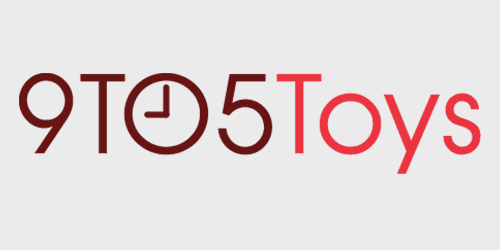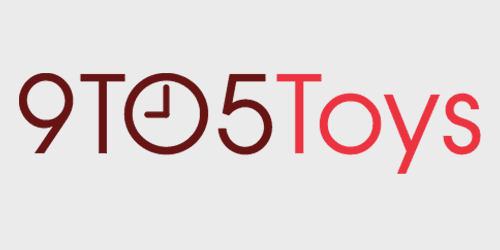
Anker’s latest pocket projector, the Nebula Apollo, packs a ton of features into its small size and $400 price point. This puts it squarely between two other portable projects we’ve taken a look at recently, the Nebula Capsule II for $580 and Vankyo GO300, which costs $280 with our coupon code 9to5Mac. Be sure to check out the video below to see some more comparisons between all three of these projectors.
Design and Features
I’ve reviewed three of these pocket projectors so far, and it seems like every time I try a new one, I’m amazed by their small size. Same story with the Apollo. Measuring just 2.56 x 2.56 x 5.1-inches with its attractive rounded design, the Apollo is considerably smaller than the Capsule II and slightly smaller than Vankyo GO300. We took a look at recently.
The new Apollo shares a lot of similar design cues and aesthetics as the Nebula Capsule II. On the back, we have the IR receiver, a Bluetooth mode button, and the power button. On the bottom, there is an HDMI port, power input, and USB port. One key difference here from other portable projectors like the Capsule II and Vankyo GO300 is the lack of an audio out feature. But you can connect a Bluetooth speaker to the Apollo – more on that later.

Features
On top of the Apollo, there is a nice assortment of touch controls. If you don’t want to use remote, this makes navigating the projector’s smart features very easy. There are buttons for volume; you can swipe to navigate around menus, open home menu, return to the previous list and enter/leave mouse key mode.
One feature that surprised me how useful it was going to be was the mouse key control. In the bottom right corner of the touchpad, you can enable or disable mouse key mode. This mode lets you drag around to control a mouse and select menu items. Some apps like Netflix are a lot easier to use with this control method.
Another easy way to control the Apollo is with the Nebula Connect App. This functionality works for all of the Nebula projectors, but here you can control the mouse functionality, standard controller functionality, and also use a keyboard to input text easily.
Anker Nebula Apollo: Video
Image
While the 200 ANSI-lumen rating on the Apollo is the same as the Capsule II, one key difference is the resolution. The Apollo projects in 480p while Capsule II is packing 720p. Depending on how big of an image you’re projecting, you might not notice that difference, but I would imagine in most viewing situations, it would look fine. To manage the image, the Apollo does have auto keystone correction but has a manual focus dial on the side of the projector.

Connectivity
As a smart Wi-Fi projector, the Apollo easily connects to a wireless network and uses Android 7.1 to install apps and watch video content. It also features Bluetooth so you can use it as a stand-alone speaker. The Apollo projector emits sound from
On the rear of the projector, there are inputs for HDMI and USB. This way, you can still connect another device like a laptop or gaming console or play media from a thumbstick.
While it lacks a 3.5mm output for audio, you can connect the Apollo to another Bluetooth speaker to expand the audio sound. This can range from another Anker speaker up to a system like the Fluance Ai40 we took a look at last year.
Another great feature is the ability to cast video directly to the Apollo when on the same network, and mirror a display through AirPlay. This makes sharing photos super simple and is a great way to connect with other devices.

In-use
Because of its small size, the Apollo projector is extremely portable. And with the claimed four-hour playtime, that should make it easy to watch any movie anywhere. I was getting close to that four hour playback time in my use.
There are a couple of things I love about these Nebula projectors like the Apollo and Capsule II that make it more appealing to me than some of the more affordable options like the Vankyo GO300. One of which is the physical controls on the projector. On the Vankyo, there are no controls, so you have to use the remote (which doesn’t come with the three AAA batteries required). The Apollo takes this a step further with the built-in mouse control on the top of the projector, making it even easier to navigate apps like Netflix.
The other thing that I love is the ¼-20 mount on the bottom of the projector. This means that you can mount it to a tripod to quickly project the image anywhere. My favorite to attach it to is a Joby Gorillapod.

Conclusion
Overall, the Nebula Apollo is an extremely impressive little projector. It packs a ton of features into a small, well-designed package. Of course, it comes at the price of $400. But, that’s a better deal than the $580 Nebula Capsule II, which you can learn more about in our hands-on review. And if you’re looking for an even more affordable option, the Vankyo GO300 offers similar features, with some compromises, for $280 when you use the code 9to5Mac.
Buy the Anker Nebula Apollo
FTC: We use income earning auto affiliate links. More.




Comments